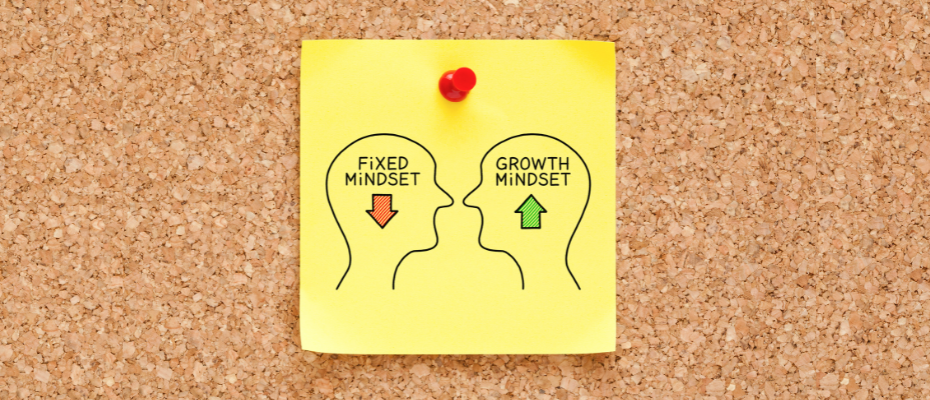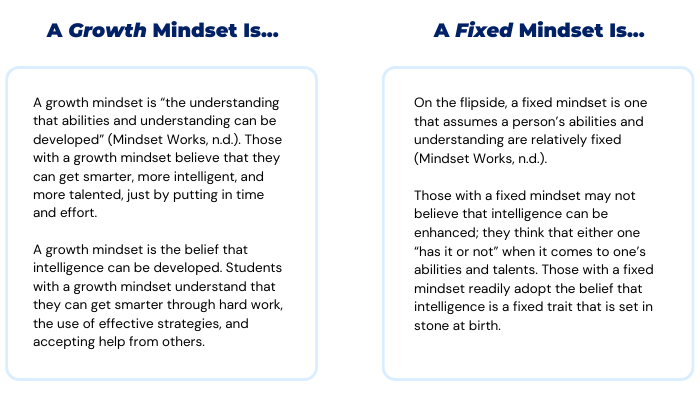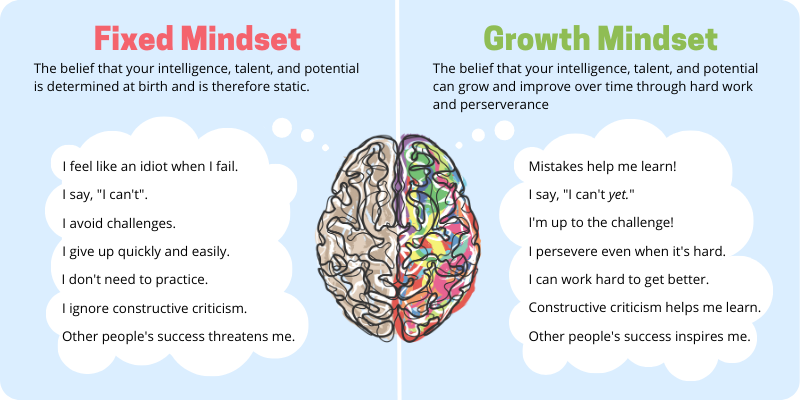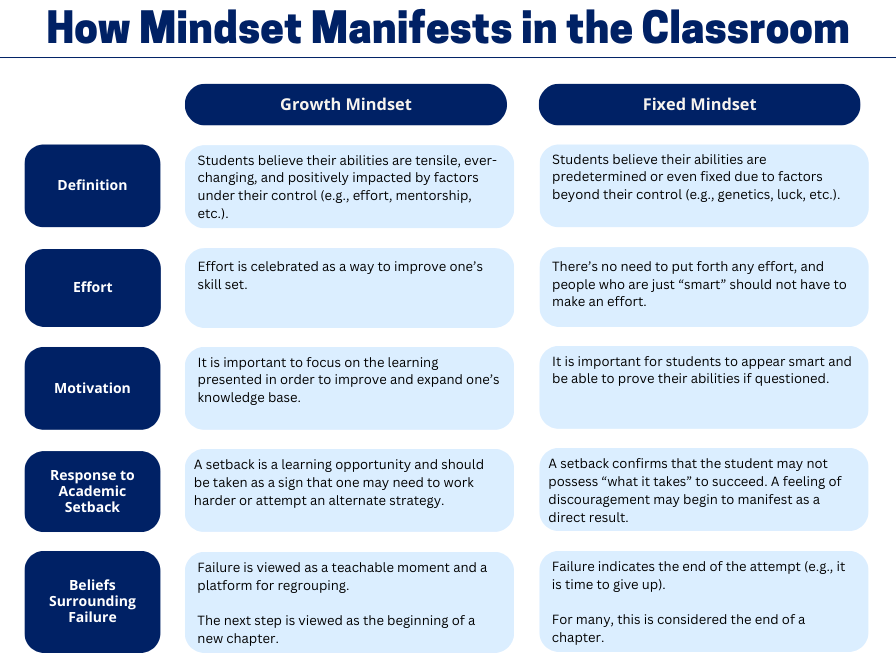What is a Growth Mindset and How Does it Impact Learning and Instruction?

Famed Yankees player Lefty Gomez (1934) is credited with the often-recited remark, “I’d rather be lucky than good.” For children and many adults, such a statement might ring true. Being “lucky” has always provided a convenient explanation and in some instances, an “out” used to explain away a given set of circumstances. If you asked your pupils to outline a scenario where luck came into play, an elementary student might describe being chosen at random to receive a piece of candy or finding a dollar bill on the sidewalk. A middle school student might wax on about his or her favorite YouTube personality or influencer who has somehow achieved an inordinate number of followers on a social media site. A high school student might cite narrowly missing a speeding ticket or sliding the key into the lock minutes before the clock aligns with his/her given curfew. In sharp contrast, however, it is highly unlikely students at any age would attribute luck alone to scenarios such as receiving a commendable mark on a test, finishing a race while achieving a new personal best time, or achieving a highly sought-after score on a favorite video game. In an instance such as these, one is far more likely to hear a student detail the process that s/he underwent in order to reach such a milestone. You might hear of long nights spent studying or attending test prep groups on the weekends. A student might detail watching tapes of him/herself playing a sport and using specific feedback from a coach or mentor to improve his/her technique. When the outcome is positive, yet personal, students — no matter the age — are more readily prepared to take credit. Essentially, luck is thrown out of the equation and hard work has the opportunity to take center stage.
Yet as educators, we must understand that even if students are unable to articulate instances of perceived “luck” within their own lives, many come to school each day in possession of a mindset that aligns with one of two distinct schools of thought. Simply stated, the research supports that once students reach school age, they can be characterized as those who possess either a flexible or a fixed mindset (Chicot, n.d.). This article explores the characteristics and specifics regarding these two types of mindsets. A better understanding of each of these areas helps to prepare us to better implement the key principles of what has become known as “growth mindset” in our own classroom settings.
But, if intelligence is truly malleable, how does one go about “growing our brains?” How do we get smarter? The key to self-improvement can be found within our own mindset. Growth mindset is the belief that intelligence, personality, and talent can grow and change, depending upon the effort which is put forth. People who possess a growth mindset are able to view personal and professional setbacks and moments of failure as an opportunity to learn and evolve (Dweck, 2012). Simply put, a growth mindset empowers the owner. Conversely, a fixed mindset is very limiting. Fixed mindset is the belief that qualities such as intelligence and talent are carved in stone. A fixed mindset creates a need in an individual to repeatedly prove him/herself time after time. If a person believes s/he only has a given amount of intelligence, personality, and talent, then s/he wants to capitalize on what s/he sees as a set number of opportunities for success or advancement within his/her interests and passions. Thus, a person with a fixed mindset will view and internalize any failure as a reflection on who they are as a person (Dweck, 2006).
The table below outlines what a growth mindset is and is not.

Take a moment to study the following anchor chart which can help instill a growth mindset in students. If a person (teacher or student) operates with a fixed mindset, s/he is more likely to react to problems and situations, instead of meeting the challenges which lie ahead with an “accept-no-excuses” motto. Adopting a growth mindset, on the other hand, shifts the thinking to a more proactive format, and results in the belief that anything is possible.

The table below provides insight into how growth and fixed mindset are commonly perceived from the perspective of students (Dichter, 2015).

How does the growth mindset movement impact students and instruction?
The level of success that educators wish for all students to achieve reaches far beyond the scope of measurable outcomes, such as their performance on yearly and cumulative achievement tests or entrance exams like the SAT and ACT. Those in the education field understand that a student’s mindset, skills, and overall habits are what can “make or break” their academic experience. With the onslaught of an ever-narrowing and competitive job market, employers seek recruits who are self-starters and team players. Those entering the job market should possess certain skills which allow them to successfully manage a variety of projects, find creative solutions to problems as they arise, and interrelate to a large client or customer base.
As a result, researchers and policy makers are now beginning to recognize and place value upon the development of a child’s “nonacademic skills.” Such abilities are commonly referred to as soft skills, workplace essential skills, 21st century skills, or social-emotional development (Janssen, 2017). One of the standouts in measures shown to effectively teach and support such skills is the fostering of a growth mindset in students at any age. New and continuing research on students with a highly developed growth mindset confirms that they are achieving at a higher rate than their classmates who possess a fixed mindset. As a result, educational stakeholders all over the world are beginning to sit up and take notice (Howell, 2017).
It should come as no surprise then that given the scope and study of growth mindset, a few consistent findings about the impact on student performance (both positive and negative) can be confidently shared. For example, the mindset which a student possesses greatly influences and shapes his/her responses to adversity in school. Thus, students who possess a growth mindset think about school and new learning as an exciting opportunity that provides an outlet for growth. These students believe (either directly or subconsciously) that their intelligence can be developed; so, learning and mastery are valued. School is seen as a positive experience, complete with motivating and engaging opportunities. Students who possess a growth mindset are able to view setbacks or productive struggle in a more positive light. They enjoy putting forth effort in order to master new skills, and they realize that overcoming academic hurdles is a common experience, as it helps to further develop their intelligence. As a result, they thrive when challenged by new material and/or their instructor. When thinking about students who possess this kind of mindset, teachers may summon the common phrase “mind over matter” because these students are able to rise above perceived hurdles or disinterest without compromising academic opportunity.
In sharp contrast, for students who possess a fixed mindset, school can indeed be an intimidating place. When students believe that talent and intelligence is “either-or” (e.g., something that one either has or doesn’t), they commonly default to showcasing how intelligent they are — or to disguising their struggle. These students are typically easy to spot because they are either always “on” (e.g., being the first to shout out an answer or chide others for incorrect answers) or they are walking around with a chip on their shoulder, with their defenses up so that no one realizes their shortcomings. These students often value grades over true moments of problem-based learning and exploration. Before approaching a task, fixed mindset students may even ask, “Is this for a grade?” If not, the teachable moment may hold little-to-no value for them. Students with a fixed mindset also view productive struggle as defeating. They may think, “If something is difficult for me or I have to exert more effort than normal, then I must not be very smart” (Romero, 2015).
Key findings gleaned from an Education Week’s Research Center (2016) survey on mindset also revealed that 600 K-12 educators believe that the development of a growth mindset in the students they teach will ultimately have a direct correlation to positive gains in curriculum, instruction, and student learning. In fact, 98% of the teachers surveyed agreed that teaching and instilling a growth mindset in their classrooms can and will result in measurable improvements in student learning. The same percentage of teachers also reported the belief that embracing growth mindset opportunities for student engagement and learning will positively impact the quality of instruction, across all subject and cross curricular areas (Yettick, 2016).
An overwhelming 90% of teachers indicated that the concept of growth mindset is synonymous with a passion for learning. As such, students have the ability to persevere in problem solving and they exhibit and foster higher levels of effort, which increases their overall participation in class. And here is where the celebration and acknowledgement for great teachers come into play. When taking into account the 600 teachers surveyed and your own classroom or colleagues, it is evident that many practices known to foster a growth mindset are already in place and being implemented with fidelity. For example, a majority of early childhood teachers all the way through high school teachers report praising students for their effort on a daily basis. In addition, they encourage their students to continue improving in areas of strength or they recommend and guide students through the successful implementation of new strategies as the inevitable setbacks are encountered.
But with the number of educational initiatives vying for the attention and focus of professional development days, fully investigating and instituting a growth mindset practice poses a very notable challenge. Only 20% of the surveyed teachers believed that they were effective in fostering a growth mindset in their own students. They reported even less credence in the abilities of their fellow educators, administrators, and policy makers. Only one in five respondents believed that they have “truly integrated growth mindset into their instructional practice” (Yettick, 2016). As a result, there exists a great hunger for practical and effective training, with 85% of teachers reporting a desire for more education on the topic, despite the fact that over 40% of respondents admitted to receiving prior training on the topic.
The First Step
In order to guide ourselves toward the consistent adoption of a deeper and well-developed growth mindset that illuminates our classroom practices, it is clearly imperative that teachers receive the proper professional development in order to fully explore the growth mindset theory so that they may effectively put it into practice with students in the classroom.
To learn more about how to instill a growth mindset in students, visit the Professional Development Institute (PDI) website or go directly to our Instilling a Growth Mindset in Students course. The Professional Development Institute has been offering quality online professional development courses to K-12 educators for over 27 years and provided training to over 345,000 teachers across the globe. We specialize in offering quality, affordable university-approved online courses that focus on the most relevant topics in education while providing practical strategies that can be implemented in the classroom immediately. All PDI courses are at the graduate-level, instructor-led, and are conducted entirely online. University credit is available through University of California Division of Extended Studies. PDI offers an extensive catalog of online courses for teachers on topics that are the most critical in today’s classrooms.
References:
Chicot, R. (n.d.). “Growth mindsets and fixed mindsets.” Retrieved 11 May 2019 from https://www.essentialparent.com/lesson/growth-mindsets-and-fixed-mindsets-2284/
Dichter (n.d.). “Growth Mindset-Learning Takes Time and Effort.” Retrieved 02 May 2019 from http://learning-how-to-learn.weebly.com/growth-mindset.html
Dweck, C.S. (2006). Dweck, C.S. (2006). Mindset: The New Psychology of Success. New York: Ballantine, 3-43. New York: Ballantine, 3-43.
Dweck, C.S. (2012). “Mindsets That Promote Resilience: When Students Believe That Personal Characteristics Can Be Developed.” In Educational Psychologist, 47(4), 302-314.
Howell, D. (2017). “Help Your Students Believe in Themselves: Self Efficacy in the Classroom.” Retrieved 01 May 2019 from http://psychlearningcurve.org/self-efficacy-in-the-classroom/
Romero, C. (2015). “What We Know About Growth Mindset from Scientific Research.” Retrieved 30 April 2019 from http://mindsetscholarsnetwork.org/wp-content/uploads/2015/09/What-We-Know-About-Growth-Mindset.pdf
Yettick, H. (2016). “Mindset in the Classroom: A National Study of K-12 Teachers.” Retrieved on 01 May 2019 from https://secure.edweek.org/media/ewrc_mindsetintheclassroom_sept2016.pdf
Categories: growth mindset, social and emotional learning

View PDI's Catalog of Courses
Check out a list of all PDI graduate-level online courses or sort by grade level or subject area.

Register Now!
Quick access to register for PDI's online courses using our secure system.

Learn More about PDI
Find out how to reach PDI and get answers to any questions you may have.
